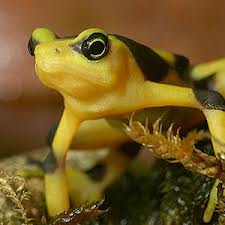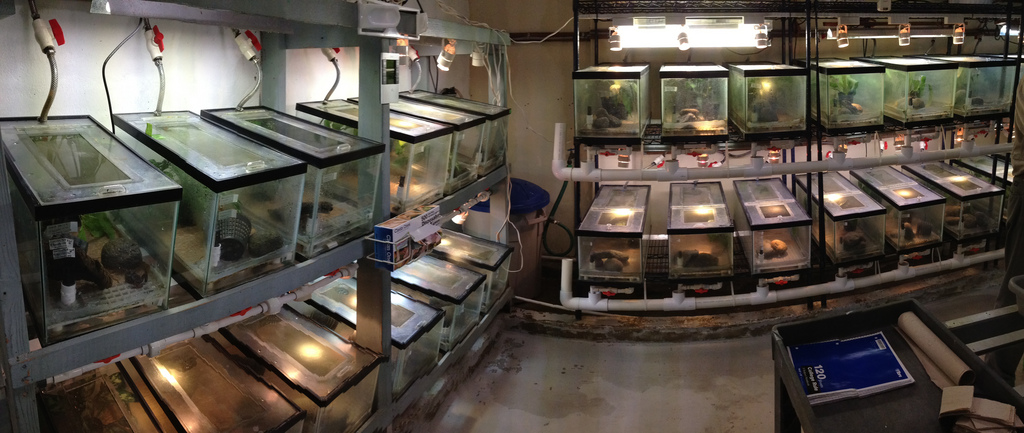Hope for the Panamanian Golden Frog

The golden frog is a national symbol for Panama, appearing on lottery tickets, souvenirs, postcards, maps and more. Believed to bring good luck, the tiny frog, that’s actually a toad, has great cultural importance. So much so, the country decided to create a day to raise awareness for their beloved amphibian. This year National Golden frog day fell on August 14th, it was Panama’s 3rd Golden Frog Day. The day was inaugurated in 2010, a few years after a fungus called chytrid reached El Valle, and began wiping out amphibian populations. The Panamanian golden frog, once found only in the mountain ranges of west-central Panama, can no longer be found in the wild, and is in danger of extinction.
The main cause of the tiny toad’s disappearance, chytrid fungus, is an amphibian disease that affects the skin of frogs causing affixation and resulting in death.
Conservations and scientists around the world have been moving unaffected amphibians to conservation facilities called “amphibian arks” in an effort to keep endangered populations alive. Arks are critical to the survival of frogs and other amphibians susceptible to the fungus.
When the fungus arrived in El Valle in 2006, conservationists began collecting healthy frogs and moving them to the only facility they had, a room in the Campestre hotel. With some support from North American zoos, The El Valle Amphibian Conservation Center (EVACC) was born.

EVACC is one of two amphibian conservation-repopulation centers in Panama. Their main goal is to maintain an environment where amphibians in danger of being affect by chytrid in the wild can reproduce and thrive while scientist search for a cure.
Since Chytrid thrives in cool mountain ranges, several theories involve an increase in the temperature of the golden frogs environment as a possible solution. Scientist have also discovered properties in a bacteria called J. Lividum that is found on the skin of some amphibians. This bacteria could be used to prevent infection by chytird.
By creating conditions similar to the wild scientist are able to test out their theories in captive breeding facilities. However, much of their focus is dedicated to getting at risk species to mate, eat and survive in captivity.
EVACC is a true success story. Now in its fourth year, the conservation center is home to the first group of golden frogs born in captivity. The egg clutches laid on November 24, 2012, successfully developed into tadpoles and then into 42 healthy golden frogs.
EVACC is open daily 9:00 a.m. – 5:00 p.m. Closed Tuesdays. The entry fee for locals is $2.00 and for foreigners $3.00, there is no extra fee to enter EVACC, but donations can be made on site.
For driving directions to Los Nispero Zoo (where EVACC is located) click here
